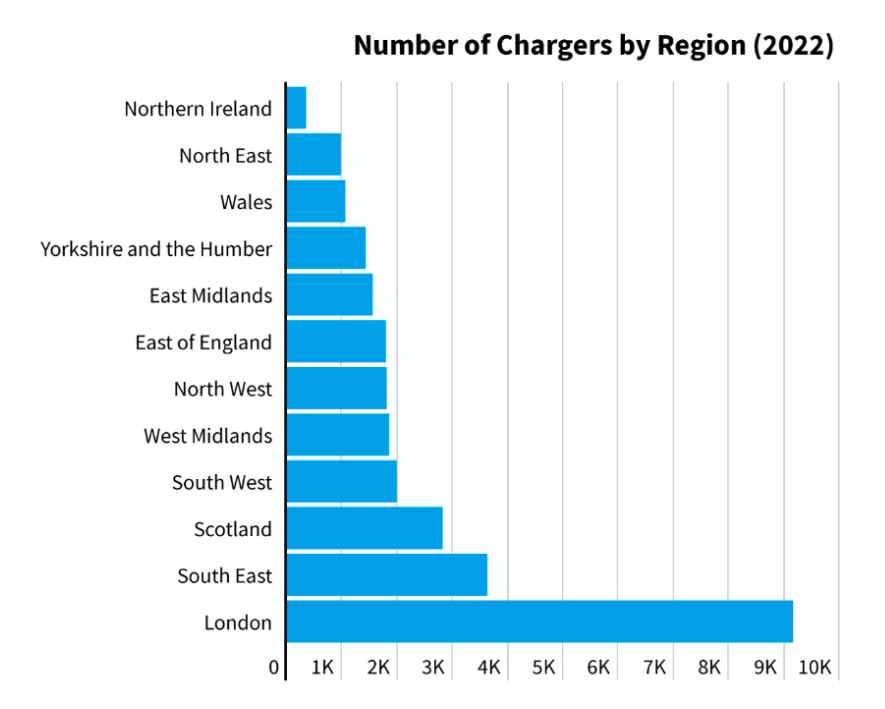New research carried out by Cenex on behalf of Transport & Environment (T&E) shows that there are almost as many workplace charge points as there are public chargers for electric vehicles in the UK.
The report found there are 33,000 charging sockets at workplaces. According to Transport & Environment, over a third of car and van miles are for commuting and business purposes – highlighting the need to require landowners to install charging where people work.
The growth of the electric vehicle (EV) fleet is being mirrored by the growth of charge point installation rates, T&E says. 7,600 public chargers were installed in the last year. Although critics claim that the current network is not sufficient, the analysis shows that the existing public network has enough charge points for the number of battery electric vehicles (BEVs) currently on the roads in the UK. As long as the installation rates continue at pace, the country will be more than ready for higher targets to be adopted in the UK’s proposed Zero Emission Vehicle Mandate.
Ralph Palmer, UK Electric Vehicles & Fleets Officer, said: “The numbers are proving skeptics wrong: the British people are moving to electric vehicles and there are enough charging stations available to help them in their transition. Workplace chargers play a key role in the country’s transition to electric. That’s why the Government should require all non-residential sites to install charging stations so that workers can readily have their vehicle charged for their commute home.”
Regional distribution of charging points is still an issue, the study finds. London surges far ahead for the number of chargers installed per region. It also leads in the average power of chargers, with a greater number of rapid and ultra-rapid (>50kW and >100kW) chargers. On the other hand, Northern Ireland is not only the lowest in the absolute number of chargers already installed, but it is also adding them at a slower rate than any other region (8% growth in 2021, compared to a 49% growth in London). The priority for the Government should be to ensure regions don’t get left behind ahead of the expected surge in numbers of electric vehicles, T&E says.

The number of EVs in the country is continuing to accelerate at pace. 14.4% of new car registrations in 2022 so far are battery electric vehicles, doubling from the previous year. The UK Government has responded to this increase with its recent Electric Vehicle Infrastructure Strategy, which sets a target for the UK to have 300,000 charge points by 2030. The government has pledged £450 million to deliver its public charging network. But T&E says that setting a topline target and throwing money at it is not a sufficient strategy to deliver a fit-for-purpose network. The Government should ensure the charging network meets the needs of all types of drivers and provide sufficient coverage across all regions.
“It’s not enough to throw money at local authorities without a clear strategy. The Government needs to level up its charging network and ensure sufficient coverage from Land’s End to John o’ Groats. Interim targets and clear policy guidance must be provided by central Government to ensure success,” Palmer explained.
Table image courtesy of Transport & Environment.
Main image: Shutterstock.








